France Carnival
Carnival of Limoux
The Carnival of Limoux is an annual festival held in Limoux, Roussillon, France. It takes place for three months on the weekends between January and Mardi Gras and is conducted in Occitan, the area's traditional language.
History
According to a tradition that dates to the 14th century, millers were released at Mardi Gras from their dues to the Dominican priory at Prouille and celebrated by walking through the streets scattering sugared almonds and flour, accompanied by minstrels. The carnival has been celebrated in Limoux since 1604.
From 2011 the wine festival Toques et Clochers has been held in Limoux every spring. The café scene is dominant in Limoux where food and drink are the dominant cultural pastime.
The Nice Carnival is one of the world's major carnival events, alongside the Brazilian Carnival and Venetian Carnival. It is held annually in February in Nice on the French Riviera.
The earliest records establish its existence in 1294 when the Count of Provence, Charles Anjou, spent "the joyous days of carnival". This probably makes the Nice Carnival the original carnival celebration.
Today the event attracts over a million visitors to Nice every year. The Carnival spans a two-week period with the final day on Mardi Gras (Fat Tuesday).
Every year, a special theme is chosen, and traditional artists create 18 floats and other figurines in traditional papier mache for colorful parade. The parades take place day and night, while on the Promenade des Anglais, “flower battles”.
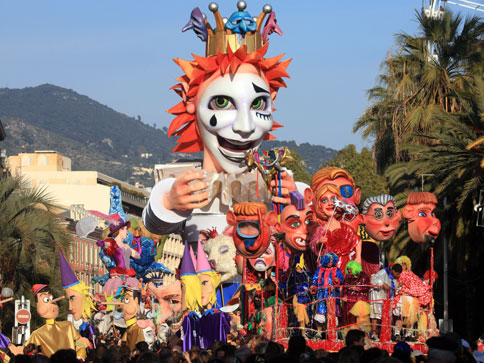
History of Carnival in Paris
The Carnival of Paris is a festival with a very long history in the French capital. Nicolas de Baye wrote in his journal in 1411:
"Monday, the 22nd of February, the royal household, in order to observe the Lenten feast, which is tomorrow, will be rising before dawn [to prepare]".
The staying-power of the Carnival of Paris, the elements that have made it an institution for centuries, is based on an unbroken tradition of "festive and carnival societies" (similar to the samba schools in Rio de Janeiro, the mystic societies in Mobile or the krewes of the New Orleans Mardi Gras) and the organized involvement of certain civic groups, corporations, and trade unions.
Workers have always played a central role in the celebrations. What is less known is the fact that the Carnaval de Paris is also, traditionally, the feast of the Paris police. During the nineteenth century, the involvement of butchers, launderers, traders, and students became essential to the liveliness of the Carnival. The variety, the multi-class composition, of the participants is found in carnivals throughout the world. Whether in Dunkirk or Brazil, tradition, organization, and the involvement of diverse segments of the population are essential for the well-being of the party.
Until the early-twentieth century, the Paris Carnival lasted much longer than just the one day, Tuesday of Mardi Gras. In 1690, in his Dictionary, Antoine Furetière wrote these words, which apply also to Paris:
"CARNIVAL, masculine noun: time of rejoicing lasting from Epiphany until Lent. Dances, feasts, and marriages are mainly held at Carnival time."
Sixty-two years later, in 1752, the Encyclopedia of Denis Diderot and Jean le Rond d'Alembert confirmed this impression with almost the same words Furetière used. (In fact, so close is the correspondence that, it seems, Furetière might have been Diderot’s source.):
"The carnival begins the day after Epiphany, or the 7th of January, and lasts until Lent. Dances, feasts, and marriages are mainly held during carnival."
Carnival in Greece
The Carnival season in Greece is also known as the Apokriés (Greek: Αποκριές, "saying goodbye to meat"), or the season of the "Opening of the Triodion", so named after the liturgical book used by the church from then until the Holy Week. One of the season's high points is Tsiknopempti, when celebrants enjoy roast beef dinners at taverns or friends' homes; the ritual is repeated the following Sunday. The following week, the last before Lent, is called Tyrinē (Greek: Τυρινή, "cheese [week]") because eating meat is not allowed, but dairy products are. The Great Lent begins on "Clean Monday", the day after "Cheese Sunday". Throughout the Carnival season, people disguise themselves as maskarádes ("masqueraders") and engage in pranks and general revelry.
In many other regions, festivities of smaller extent are organized, focused on the reenactment of traditional carnevalic customs; for example those held in Tyrnavos (Thessaly), Kozani (West Macedonia), Rethymno (Crete) and in Xanthi (East Macedonia and Thrace). SpecificallyTyrnavos holds an annual Phallus festival, a traditional "phallkloric" event in which giant, gaudily painted effigies of phalluses made ofpapier maché are paraded, and which all women present are asked to touch, or kiss, their reward for doing so being a shot of the famous local tsipouro alcohol spirit. Also every year, to the very beginning (from 1 to 8 January), mostly in regions of the Western Macedonia, there are Carnival fiestas and festivals. The best known of them is the Kastorian Carnival or "Ragoutsaria" [tags: Kastoria, KAstorian Carnival, Ragoutsaria, Ραγκουτσαρια, Καστοριά]. It takes place from 6 to 8 January with a mass participation of the local population and thousands of visitors under the sounds of big brass bands, pipises, Macedonian and grand casa drums. It is an ancient celebration of nature's rebirth (fiestas for Dionysus (Dionysia) and Kronos (Saturnalia)), which ends the third day in a huge dance in the medieval square Ntoltso where all the bands are playing the same time and all the people are dancing too.
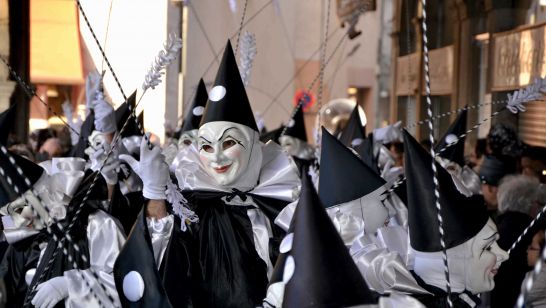
Patras Carnival
The Patras Carnival, Patrino karnavali is the largest event of its kind in Greece and one of the biggest in Europe. It has more than 160 years of history. The events begin on 17 January and last up to Clean Monday. The carnival of Patras is not a single event but a variety of events that includes balls, parades, hidden treasure hunt and the children's carnival amongst others. It climaxes in the last weekend of Carnival with the Saturday evening parade of carnival groups, the extravagant Sunday parade of floats and groups, and finally the ritual burning of the carnival king at the St. Nikolaos Street pier in the harbour of Patras. Its characteristics are spontaneity, improvisation, inspiration and volunteerism.
The Patras carnival, as most carnival events in the Mediterranean and the Balkans, is connected with ancient pagan rituals, such as those to honour Dionysus. According to these traditions, in the heart of the winter the faithful invoke the deity with special feasts and he is reborn in order to bring spring once again.
However most people agree that the starting event of the Patras Carnival in its modern day form was a ball given in the residence of the merchant Moretis in 1829. French troops of general Maison stationed in the city after its liberation from the Turks were a major influence on the carnival bringing their own culture and traditions to the festivities. During the 19th century new arrivals from the newly joined heptanese, the islands in the Ionian sea that became part of Greece in 1864, were to also dramatically influence the nature of the festivities with tremendous vitality, creativity and a sense of fun that were part of their vibrant regional culture and music. Later on, and as a consequence of the prosperity of the city at the end of 19th century, the carnival festivities take on a more regular nature. The geographical location of the town and the ever increasing dominance of the port ensured a constant communication with Italy and the rest of Western Europe. Their grand carnivals and the Venetian carnival in particular were especially influential in shaping the festivities, giving the carnival to this day its western characteristics.
The first carnival floats appeared in the 1870s. At that time the floats were exclusively the creations of individuals. Only later did the Municipality of Patras undertake to construct a large number of them.
In 1880 on Saint Anthony's day the first "mpoules" appeared. These were groups who were disguised and anonymously poked fun at friends and other people in the neighbourhood. This custom has now disappeared.
As the historian of the Patras Carnival Nikos Politis points out, beautiful carnivals were organized during the belle époque in the years 1900, 1907, 1909 with attendance for the first time of individuals from all social classes and origins. This period also gave birth to the egg-war custom. Wax eggs were made stuffed with confetti using specially designed machines which the carnivalists threw from balconies. Although this custom has disappeared, it is considered to be the precursor of the chocolate war which still persists. Bars of chocolates are thrown by revellers on floats or amongst groups at parties.
Irrespective of when the Triodion falls,the three-week period preceding the first Sunday of Lent, it is customary for the Carnival of Patras to start on the day of St. Anthony (17 January). A town crier appears on the streets of Patras; in recent years this has been a specially constructed float with music. The crier announces the opening with a satirical message and invites the town's residents to assemble that evening for the opening ceremony in George square. During a spectacular celebration with elements of surprise, as the programme is kept secret till the last moment, the start of the Patras Carnival is declared by the town's mayor from the first floor balcony of the Apollon theatre. The programme usually includes pantomimes and patters, dances, music and fireworks.
An extension of the traditional festivities based around the burning of the float of the Carnival King, with concerts, dances, a farewell to the carnival past, announcements about the carnival to come and countless fireworks. It takes place at the port on Sunday night and is also broadcast on TV.
Italy
Etymology of the word "Carnival"
The world carnival (Italian:Carnevale) possibly come from Latin carnem levare or carnelevarium, which means to remove meat.
Developed around the Roman Catholic festival of Lent (Quaresima or “the forty days”) carnevale was associated with pre-Lenten festivals practiced on and around Shrove Tuesday (Martedì Grasso).
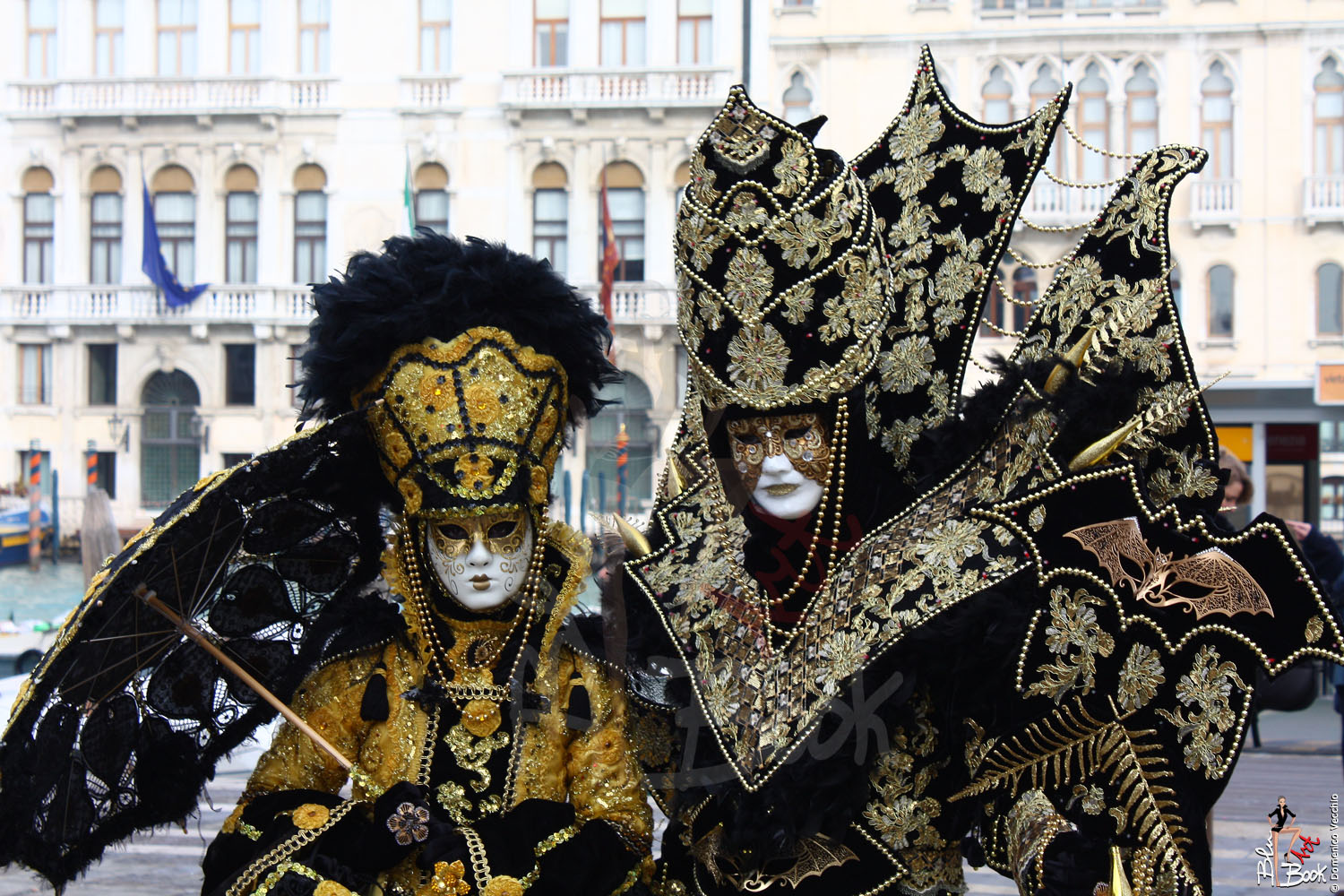
In Venice
It is said that the Carnival of Venice was started from a victory of the "Serenissima Repubblica" against the Patriarch of Aquileia, Ulrico di Treven in the year 1162. In the honor of this victory, the people started to dance and make reunions in San Marco Square.
Under the rule of the King of Austria, the festival was outlawed entirely in 1797 and the use of masks became strictly forbidden.
The Carnival returned to operate in 1979. The Italian government decided to bring back the history and culture of Venice.
Today, approximately 3 million visitors come to Venice every year for the Carnival. One of the most important events is the contest for la maschera più bella ("the most beautiful mask") placed at the last weekend of the Carnival and judged by a panel of international costume and fashion designers.
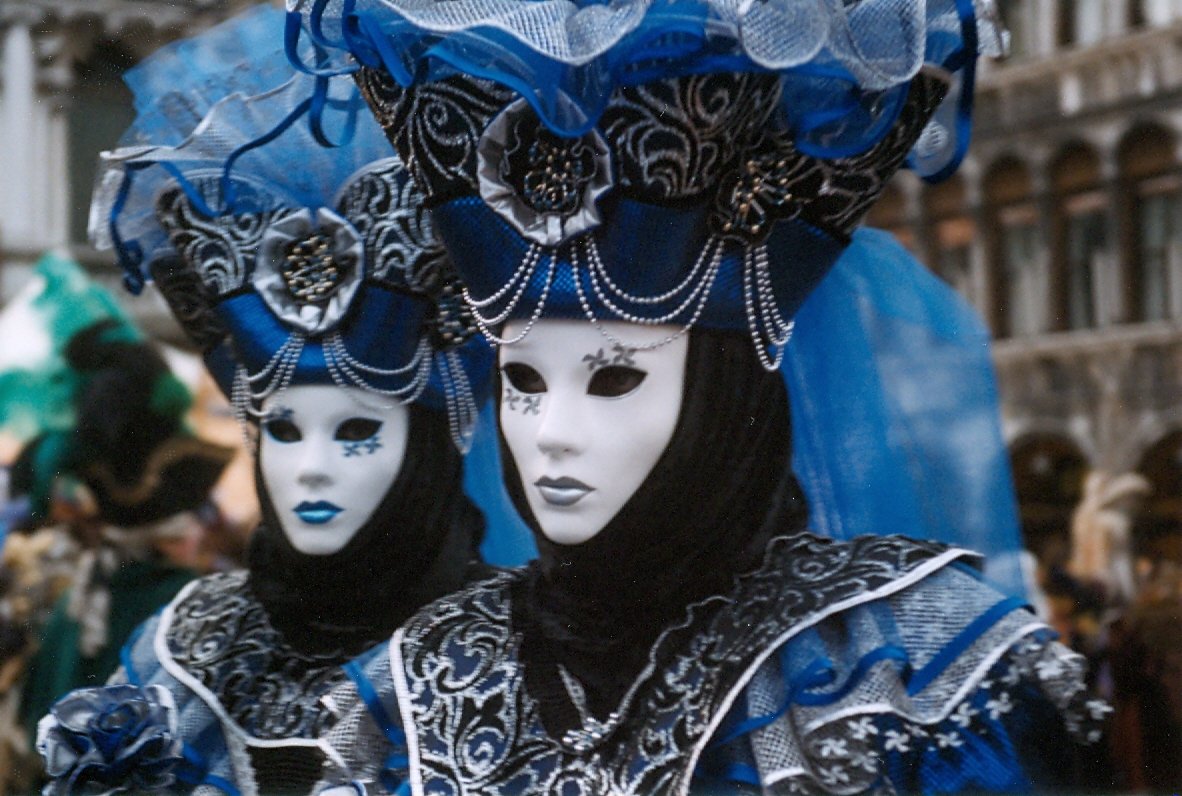
Carnival Masks
Masks have always been an important feature of the Venetian carnival. Traditionally people were allowed to wear them between the festival of Santo Stefano (St. Stephen's Day, December 26) and the start of the carnival season at midnight of Shrove Tuesday. As masks were also allowed on Ascension and from October 5 to Christmas, people could spend a large portion of the year in disguise. Maskmakers (mascherari) enjoyed a special position in society, with their own laws and their own guild.
Venetian masks can be made of leather, porcelain or using the original glass technique. The original masks were rather simple in design, decoration, and often had a symbolic and practical function. Nowadays, most of them are made with the application of gesso and gold leaf and are all hand-painted using natural feathers and gems to decorate.
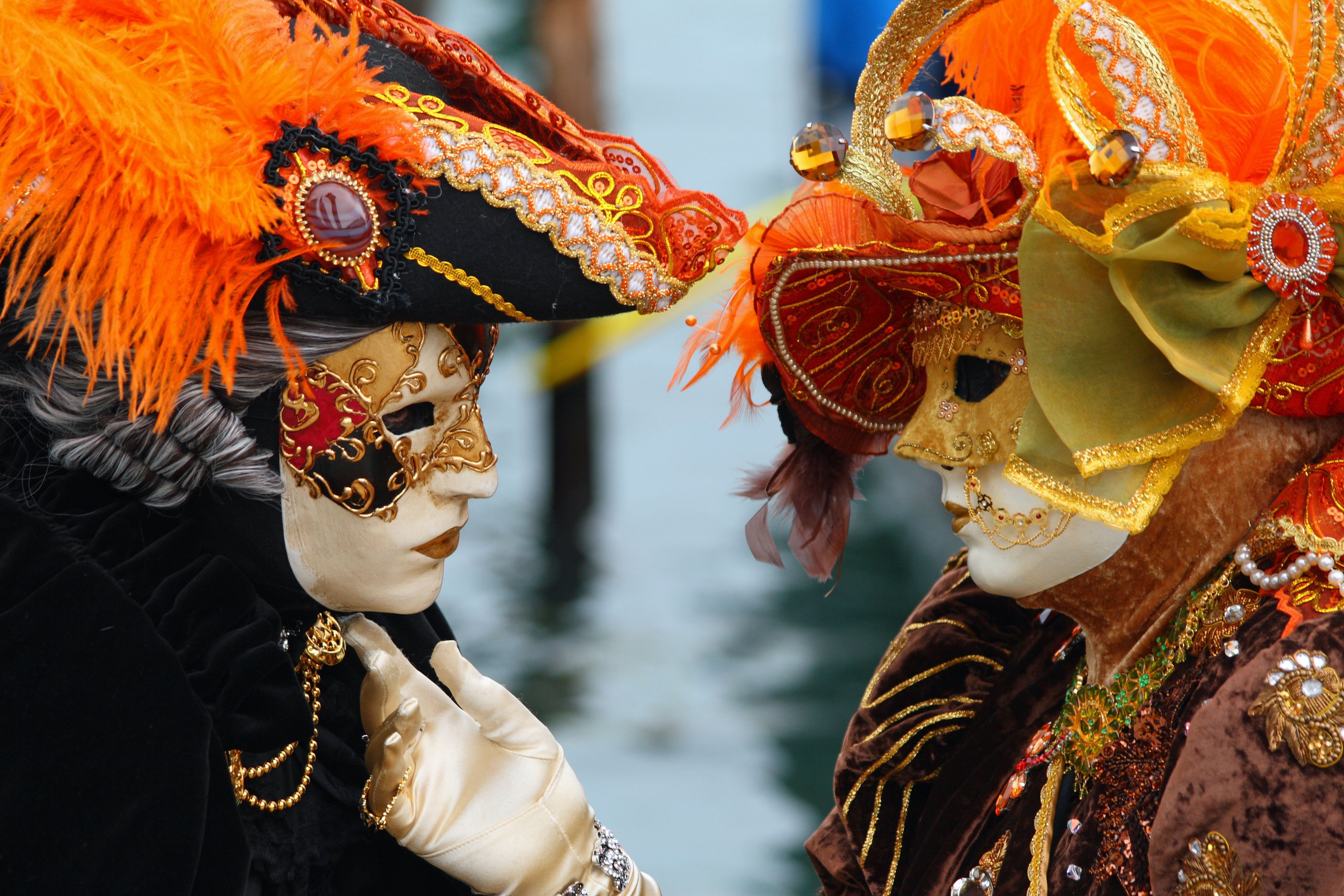
History
There is little evidence explaining the motive for the earliest mask wearing in Venice. One scholar argues that covering the face in public was a uniquely Venetian response to one of the most rigid class hierarchies in European history.
The first documented sources mentioning the use of masks in Venice can be found as far back as the 13th century. The Great Council made it a crime to throw scented eggs. The document decrees that masked persons were forbidden to gamble.
Another law in 1339 forbade Venetians from wearing vulgar disguises and visiting convents while masked. The law also prohibited painting one's face, or wearing false beards or wigs.
Near the end of the Republic, the wearing of the masks in daily life was severely restricted. By the 18th century, it was limited only to about three months from December 26. The masks were traditionally worn with decorative beads matching in colour.
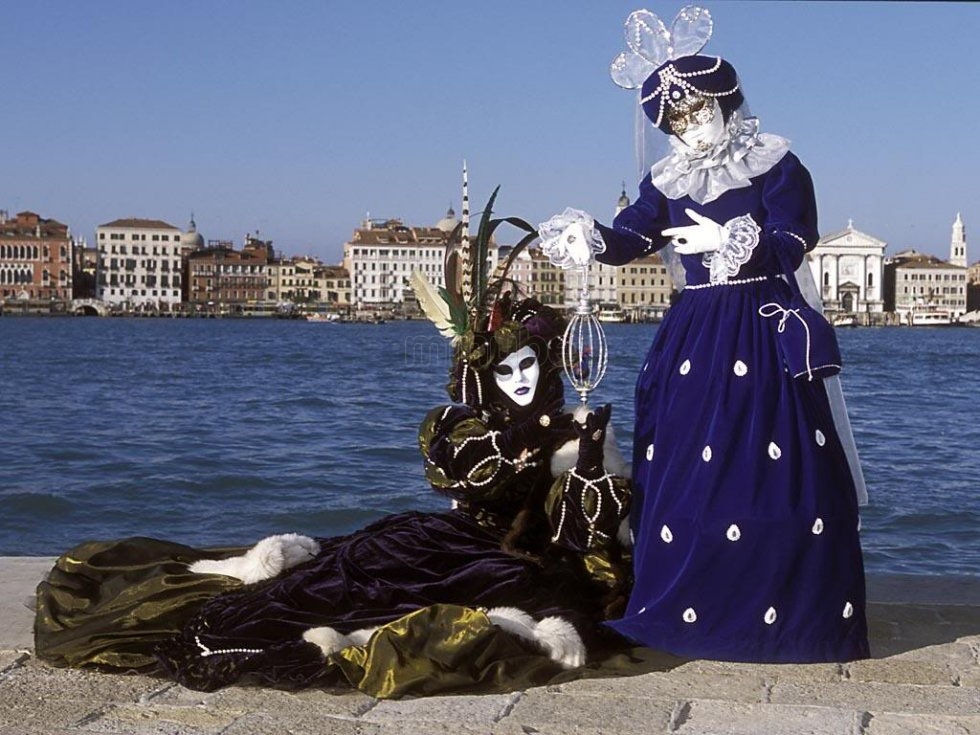
Types of masks
Several distinct styles of mask are worn in the Venice Carnival, some with identifying names. People with different occupations wore different masks.
Arlecchino
Arlecchino, meaning harlequin in Italian, is a zanni character of the commedia. He is meant to be a kind of "noble savage", devoid of reason and full of emotion, a peasant, a servant, even a slave. His originally wooden and later leather half-mask painted black depicts him as having a short, blunt, ape-like nose, a set of wide, round, arching eyebrows, a rounded beard, and always a "bump" upon his forehead meant to signify a devil's horn. He is a theatrical counterpoint to and often servant of Pantalone, and the two characters often appeared together on the stage.
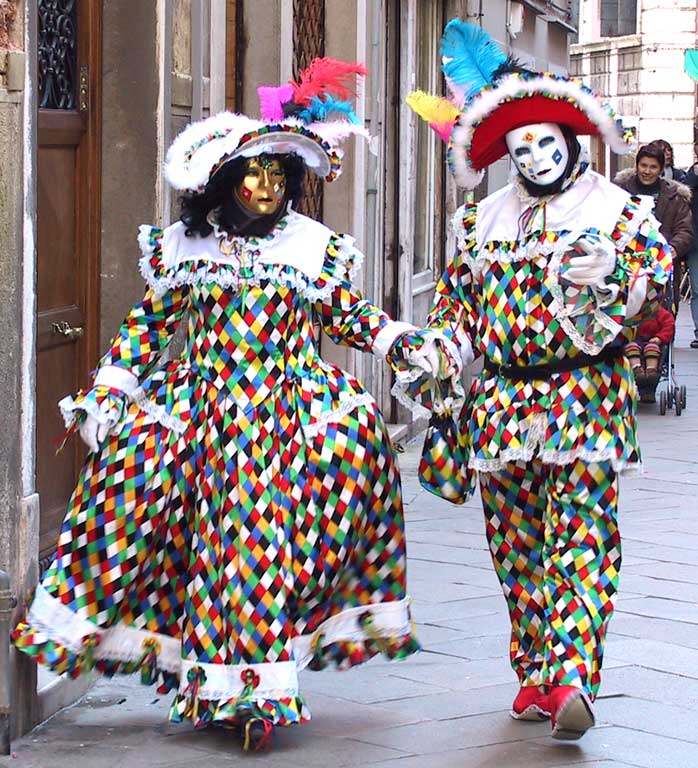
Medico della peste (The Plague Doctor)
The Medico della peste, with its long beak, is one of the most bizarre and recognisable of the Venetian masks, though it did not start out as carnival mask at all but as a method of preventing the spread of disease. The striking design originates from 17th-century French physician Charles de Lorme who adopted the mask together with other sanitary precautions while treating plague victims. The mask is often white, consisting of a hollow beak and round eyeholes covered with crystal discs, creating a bespectacled effect. Its use as a carnival mask is entirely a modern convention, and today these masks are often much more decorative.
The plague doctors who followed De Lorme's example wore the usual black hat and long black cloak as well as the mask, white gloves and a stick (so as to be able to move patients without having to come into physical contact with them). They hoped these precautions would prevent them contracting the disease. Those who wear the plague doctor mask often also wear the associated clothing of the plague doctor. The popularity of the Medico della peste among carnival celebrants can be seen as a memento mori.
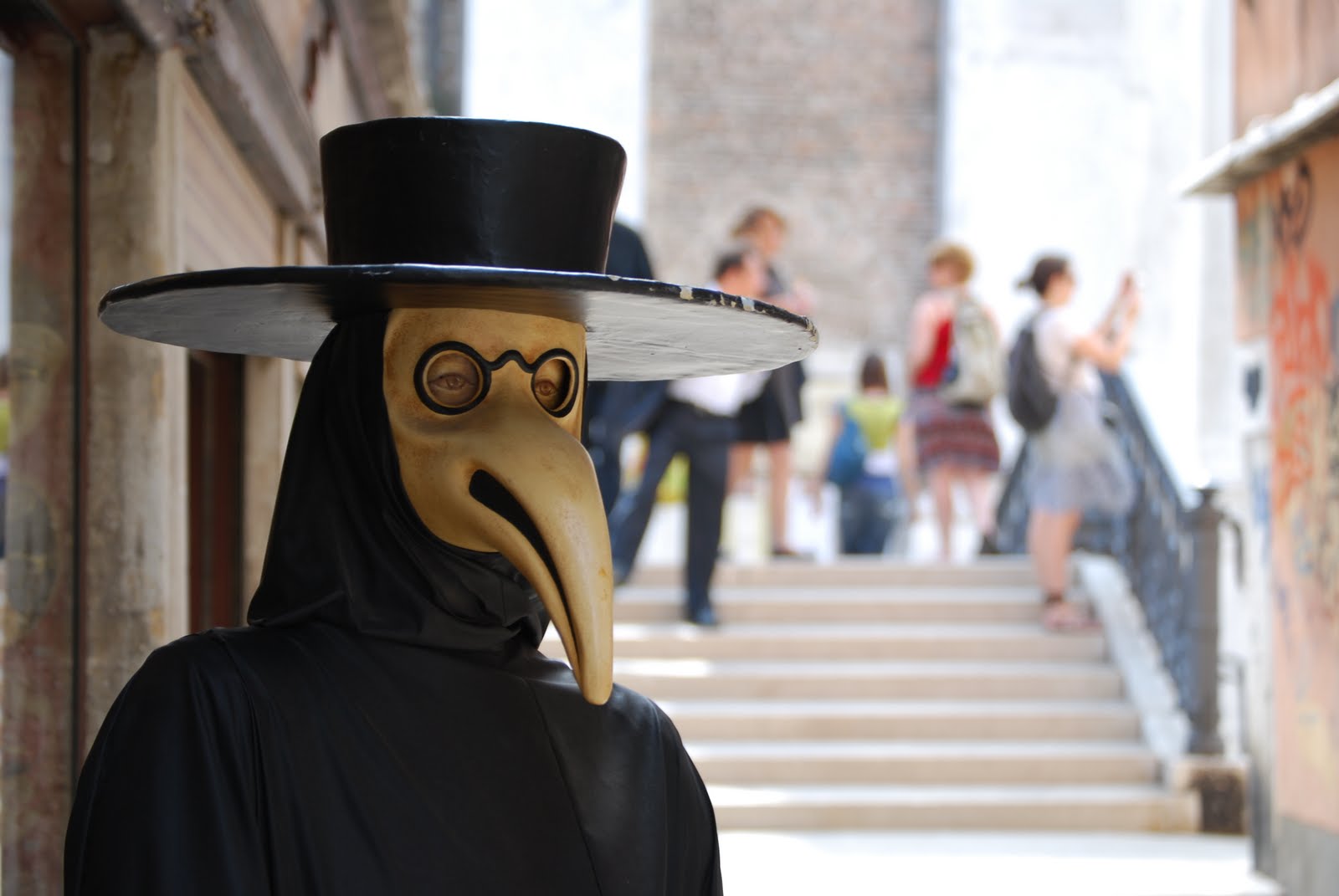
Spain
Santa Cruz de Tenerife
Carnival is the most popular festivity in Santa Cruz de Tenerife and the most participative of those held on the Canary Islands. In 1980, it was declared “Fiesta of International Tourist Interest”, and in 1987, it entered the Guinness World Record Book as the largest gathering of people in an outdoor plaza to attend a concert- more than 200.000 people.
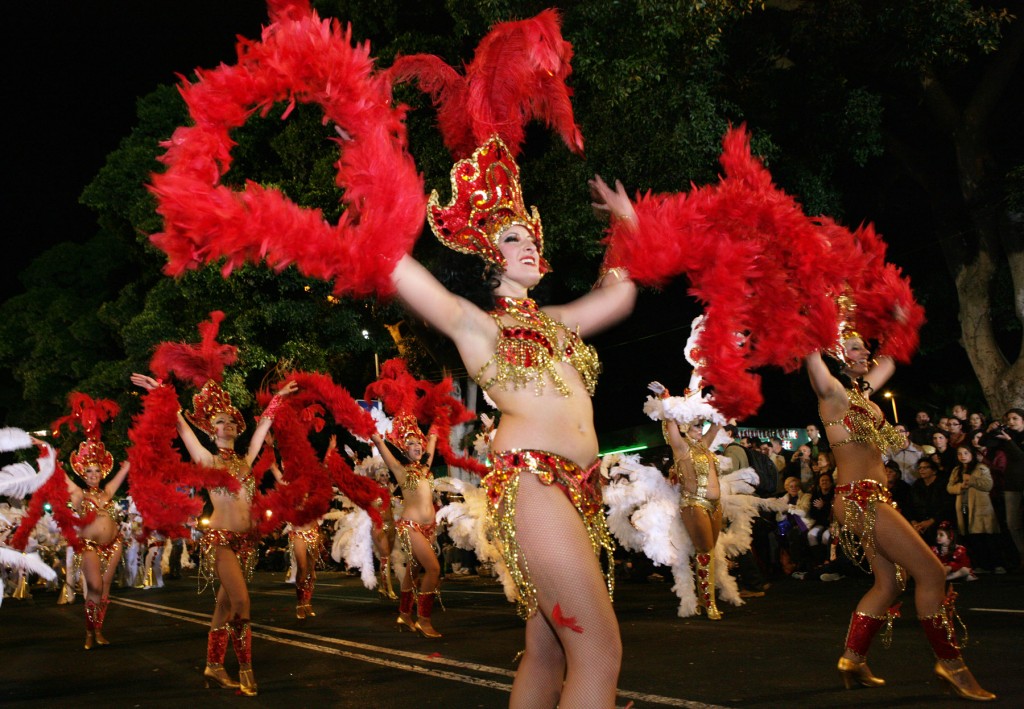
The Gala to elect the Santa Cruz de Tenerife Carnival Queen is the highlight of the Carnival. A similar event for children has been held since 1975, the election of the Junior Queen, as well as, since 1984, the election of the Senior Queen.
http://goitaly.about.com/od/festivalsandevents/a/carnevale.htm
GLOSSARY
| WORD |
DEFITION |
ITALIAN TRANSLATION |
GREEK TRANSLATION |
| Mask |
Any covering for the whole or a part of the face, worn for amusement,protection,disguise etc.. |
Maschera |
Μάσκα |
| Parade |
Parade of floats and masks in the street |
Parata |
Παρέλαση |
| Confetti |
Small pieces of coloured paper thrown on festive occasions |
Coriandoli |
Κονφετί |
| Streamers |
A long narrow coiled ribbon of coloured paper that becomes unrolled when tossed |
Stelle Filanti |
Σερπαντίνες |
| Floats |
Transport vehicle colorful and decorate a four wheels |
Carri |
Άρματα
|